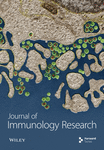Neurological Dysfunction Associated with Antiphospholipid Syndrome: Histopathological Brain Findings of Thrombotic Changes in a Mouse Model
Abstract
The aim of this work was to study the pathological processes underlying neurological dysfunctions displayed by BALB/C mice induced with experimental antiphospholipid syndrome (APS), as we have previously reported. Experimental APS was induced in female BALB/C mice by immunization with a pathogenic monoclonal anticardiolipin (aCL) antibody, H-3 (n=10), or an irrelevant immunoglobulin in controls (n=10). Mice immunized with H-3 developed clinical and neurological manifestations of APS, including: embryo resorption, thrombocytopenia neurological defects and behavioral disturbances. In mouse sera, the titer of various autoantibodies were elevated, including: anti-phospholipids (aPLs), anti-2 glycoprotein-I (β2GPI), anti-endothelial cell antibodies (AECA) and low titer of anti-dsDNA antibodies. Five months after APS induction, mice were sacrificed and brain tissue specimens were processed for hematoxylin and eosin (H&E), immunofluorescence staining and transmission electron microscopy (TEM). H&E staining of cortical tissue derived from all APS mice revealed mild inflammation, localized mainly in the meninges. Prominent IgG deposits in the large vessel walls and perivascular IgG leakage were observed by immunofluorescence. No large thrombi were observed in large vessels. However, EM evaluation of cerebral tissue revealed pathological changes in the microvessels. Thrombotic occlusion of capillaries in combination with mild inflammation was the main finding and may underlie the neurological defects displayed by mice with APS.




